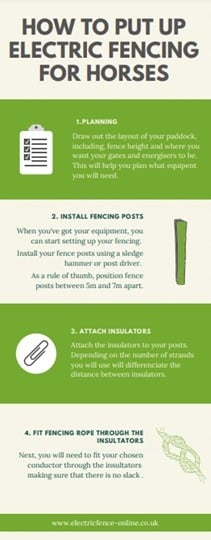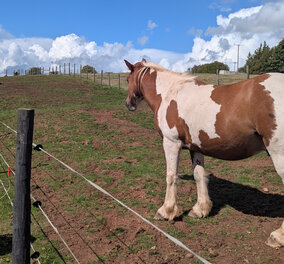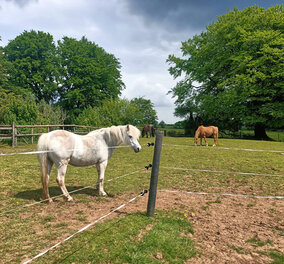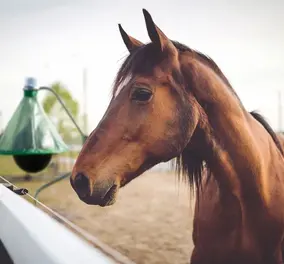When it comes to setting up electric fencing for horses, and all animals in fact, preparation and planning is key. Depending on where you plan on setting up your paddocks and what type of horse will be grazing in it, will impact upon the equipment you will need. You will not only need to consider the size of paddock you want, but the height of the fence too. If you are planning on grazing stallions in the paddocks you may want more strands of wire compared with Shetlands or foals. Planning is vital.
Equipment Needed For Setting Up Electric Fencing For Horses
When it comes to electric fencing, there are five necessary pieces of equipment you will need to keep your grazing horses contained.
Fence Posts
Firstly, fence posts are a must as they will keep your paddock stable and resilient against mother nature. However, ensuring you chose the right fence posts for you is absolutely vital. If you are planning on moving your fencing regularly, then light posts will be for you, whereas if you are looking to build long-lasting paddocks, then wooden fence posts may be more appropriate. This is a consideration you will need to have thought about in your planning phase.
Fencing Conductor
Secondly, you will need to find an appropriate fencing conductor. There are lots of options from electric fence tape, rope, wire and more. However, when putting up electric fencing for horses we would always recommend that you use a form of electric fence tape or rope as there is a lesser risk of injury compared with if you plan to use wire as you may with other animals.
 |
 |
 |
Insulators
Next, once you’ve got your fence posts and conducting rope, you will need insulators which connect the fencing conductor to the posts to stop earthing from occurring. A common mistake that is made with insulators is getting the wrong size for your barrier, so this is something to be aware of when you are purchasing your equipment. Also, you mustn’t forget the gate handle insulators that you will need to ensure that the current flows through the gate and also keeping you safe from shocks when you are turning horses out and bringing them in.
Earthing Rods and Energisers
Finally, to make sure your fencing conductor truly will contain your horses, earthing rods and an energiser will be needed to convert power and push the pulses down the fencing line. Don’t worry though, these pulses are of high voltage but low amperage which means they are safe but may not be very nice when touched.
Another key item which you may want to consider is an electric fence tester so that you can check your electric fence current is not earthing anywhere before your horses or ponies’ escape!
Here’s how you should set up your electric fence:
 |
 |
Top Tips from Electric Fence Online
We hope you have every success in putting up your electric fencing for horses and ponies! Here are a few top tips for a successful build!
Avoid Earthing – When setting your electric fence up, make sure there is no earthing due to your fence touching vegetation! This is vital to ensure your fencing keeps your animals secure and where they should be!
Maintenance – The work doesn’t just end when putting up your electric fencing, you will need to regularly test the voltage to make sure the electrical current is flowing as it should and that there is no earthing occurring as a result of movement in the posts or rope slackening. Regular checks will set you up for a successful grazing summer!
Browse our range of equipment for all of your fencing requirements.






